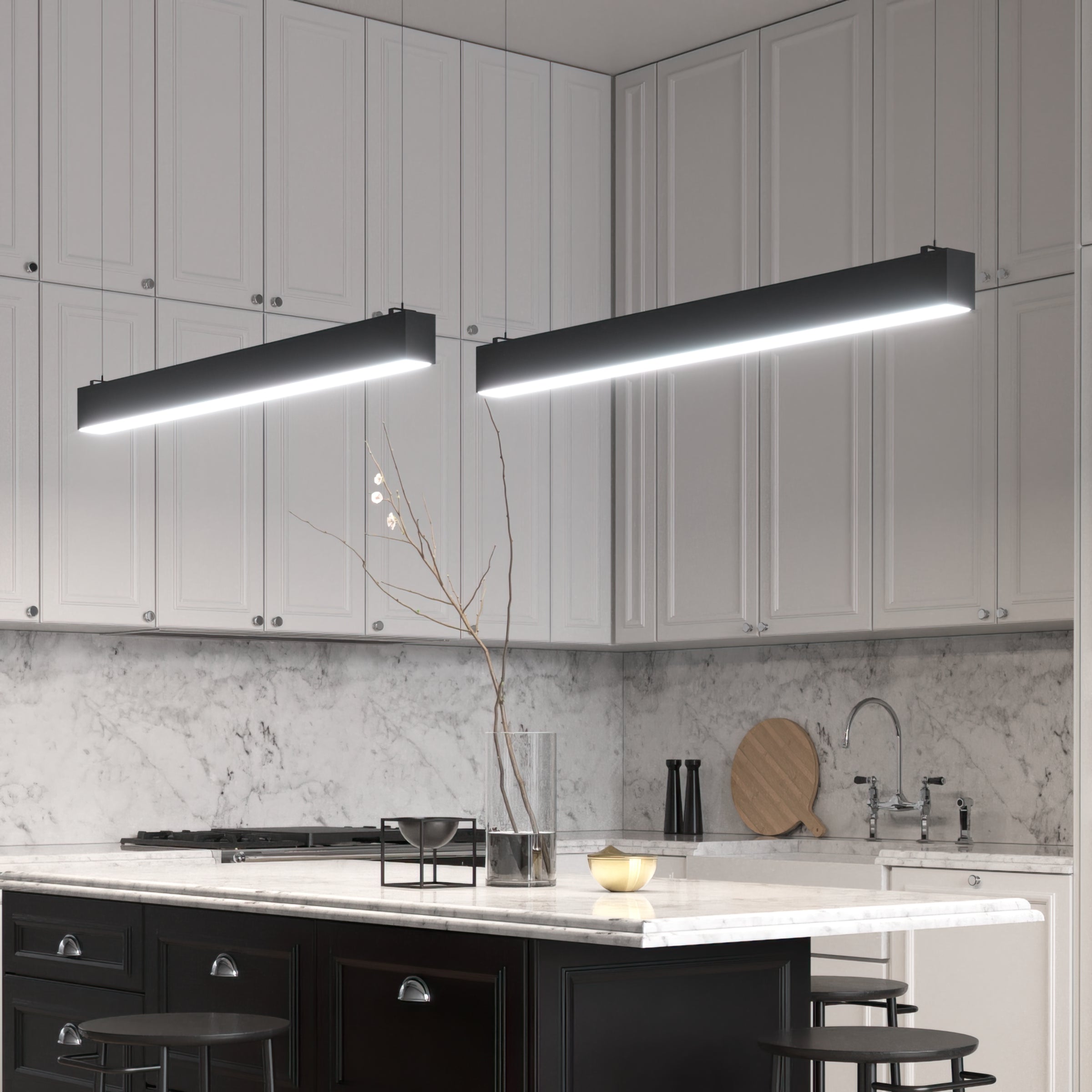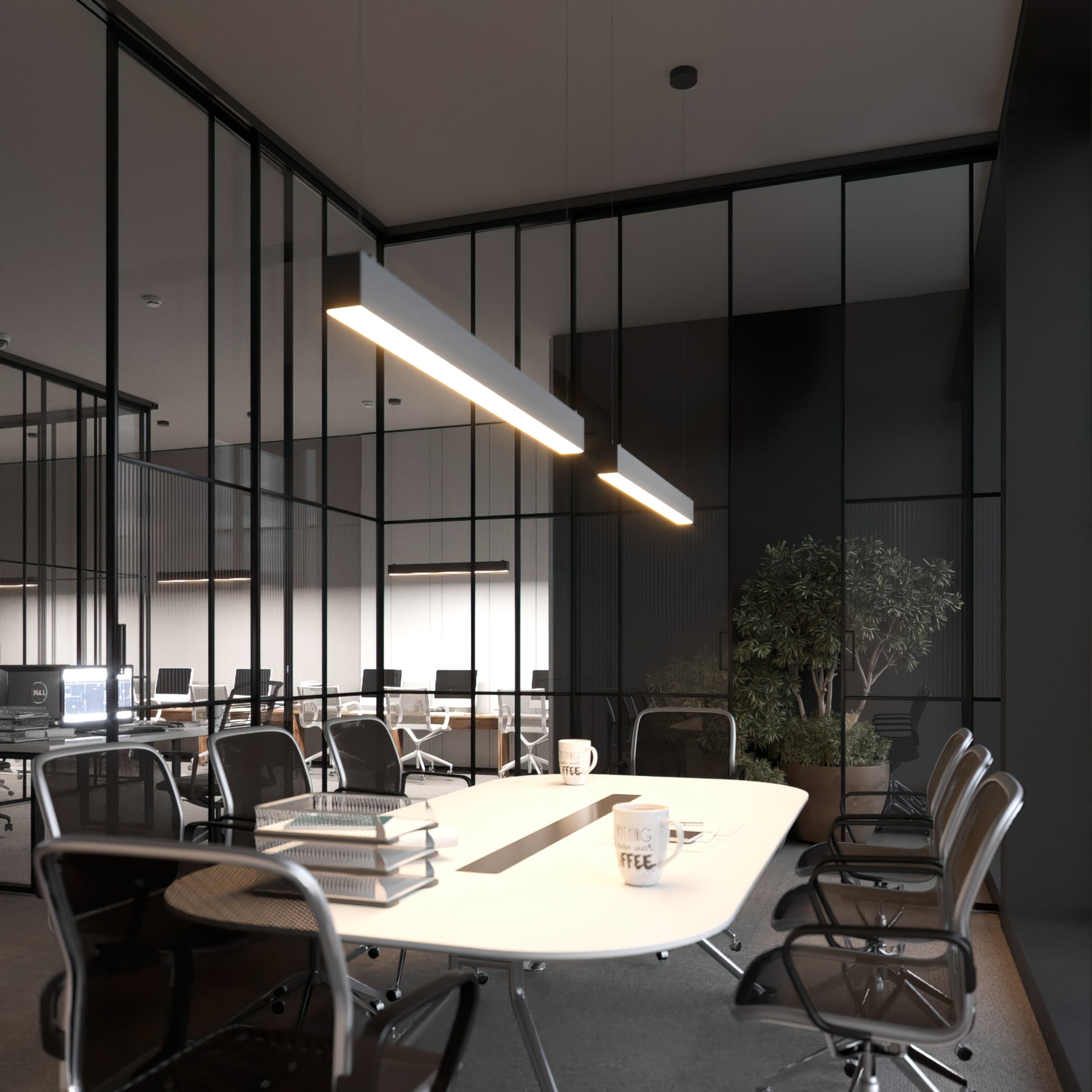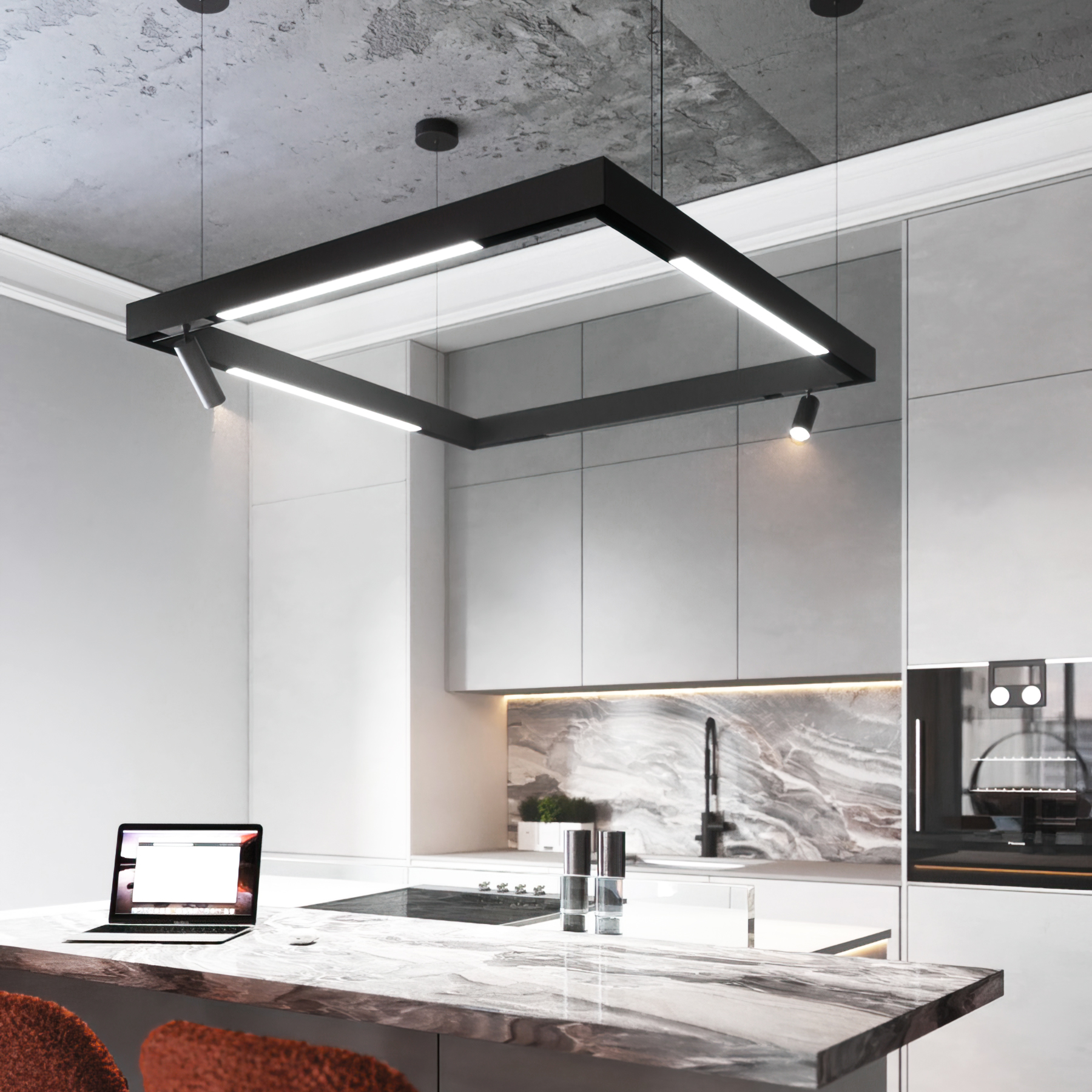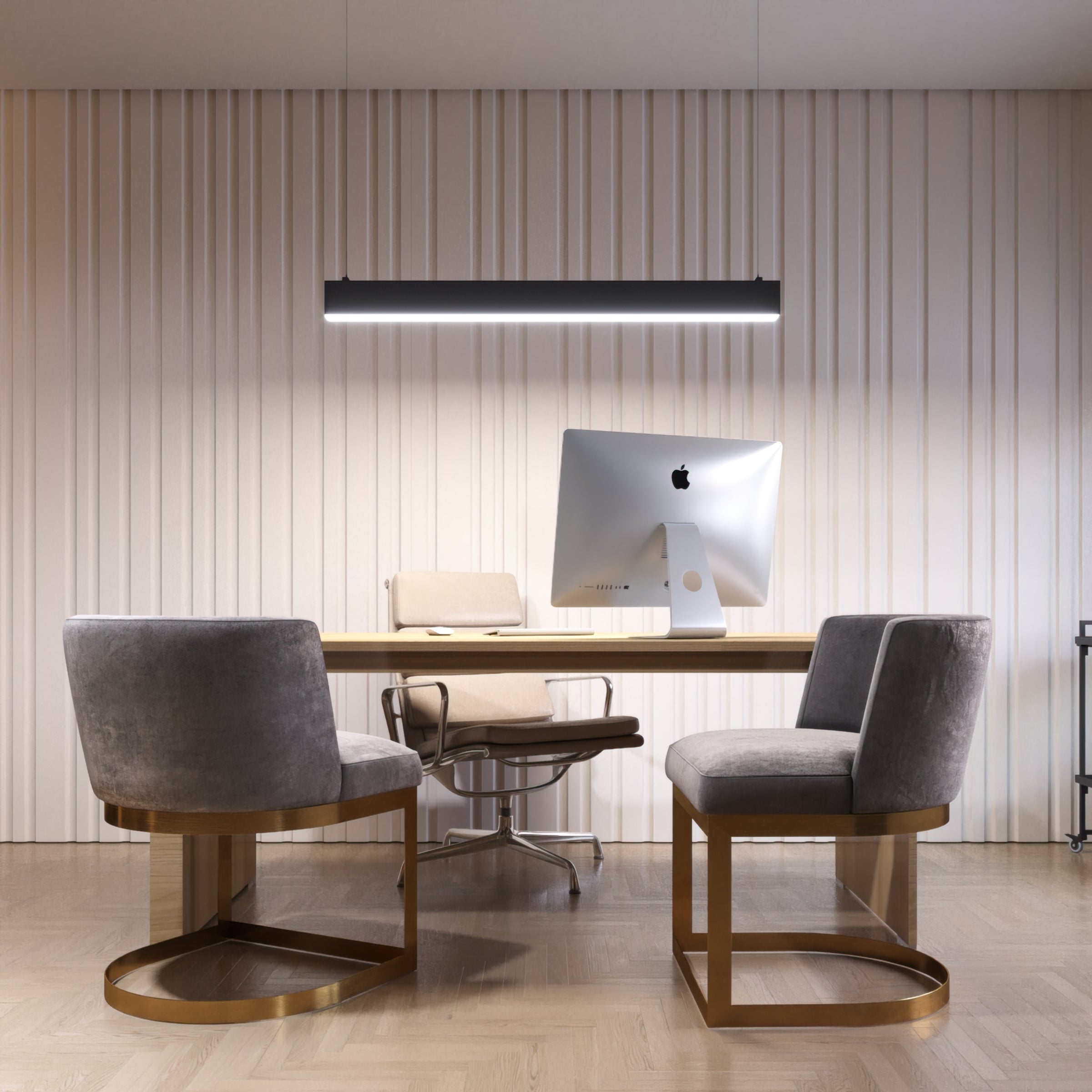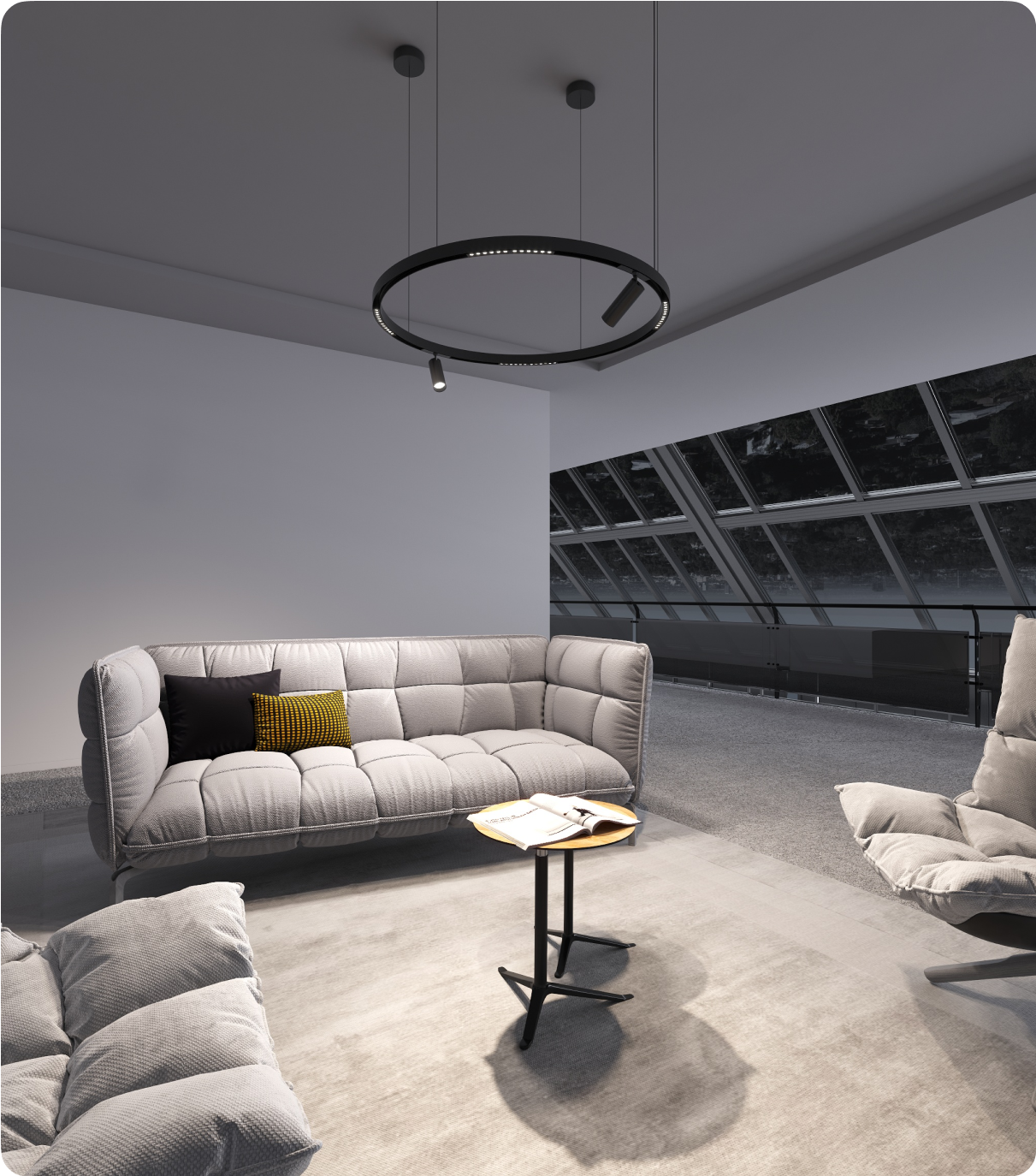When selecting an LED light source, two crucial factors are color temperature and color rendering. In previous blog posts, we have briefly discussed color temperature, but we believe it is an essential topic that deserves further attention. For more information on color rendering, please refer to our dedicated blog post on the subject.
The lighting temperature guide pertains to the warmth or coolness of light, with warmer light-emitting more yellow tones and cooler light-emitting more blue tones. There is no standard White LED, and you must choose between warm or cool lighting when purchasing your fixtures.
What is Lighting Temperature?
Lighting temperature is the color produced by a light source at a specific temperature, measured in Kelvins. This unit is named after scientist William Kelvin, who discovered how the light emitted by heated carbon changed at different temperatures. While most modern light bulbs do not use heat to produce light, their color temperature is still measured using a scale called Correlated Color Temperature (CCT), which matches the emitted light to the Kelvin chart.
The Color Rendering Index (CRI) scale correlates Kelvin's measurements to the color spectrum. Lower-temperature light has warmer hues, emitting dim red to yellow hues. Light takes on a cooler color scheme in the middle of the temperature range. When heated to high temperatures, the light mimics daylight with bright, bluish-white colors.

Color Lighting Temperature Chart
The range of color temperatures on the Kelvin temperature scale is from 2700K to 6500K, and this range encompasses a variety of labeled color temperatures.
- Warm White Light is a soothing and relaxing lighting option that works well in bedrooms, living rooms, dining areas, and restaurants, ranging from 2700K to 3500K.
- Natural White Light ranges from 3500K to 4500K and is a cool and clean LED color that closely mimics sunlight. This makes it suitable for almost any location, especially in basements, garages, and other areas with low natural light where cool white LED lights are recommended.
- Daylight White Light ranges from 5000K-6000K and is a bright and clear white light suitable for use in garages, security lights, offices, and retail locations.
- Cool White Light, with a color temperature between 6000K and 7000K, is an ideal choice for commercial and industrial use or any situation that requires increased alertness.
Color Temperature for Different Types of Lighting and Various Spaces
Ambient Lighting
Ambient lighting is essential to any home or office space as it helps people see and orient themselves. It is the type of lighting that covers the entire room and is often provided by a central overhead fixture or several recessed ceiling lights. This type of lighting needs to be bright, warm, and clear, which is essential for everyday human functions.
Using light with a lower CCT, usually between 2700K and 3000K, can create a cozy, relaxing, particularly effective atmosphere. Its warmth helps create a more comfortable environment and allows people to see clearly and navigate their homes safely at these levels.
However, warmer lights may be more appropriate for ambient lighting in some rooms. For instance, lighting with a CCT of about 3400K to 4000K in bathrooms will be ideal. When you use bathroom lighting that mirrors the CCT of natural sunlight, you'll give people a good representation of how they'll appear in the real world.
Cooler light is ideal for studies and home offices, as it tends to have a more energizing effect compared to warm ambient lighting. By using lights with CCTs of about 3000K to 4000K, you can create a focused atmosphere that is conducive to studying or working.
In summary, choosing the right lighting temperature of a LED light bulb for your ambient lighting is essential as it helps create a comfortable, safe, and functional environment. You should choose lighting with a CCT that is appropriate for the room and the activities that take place in it. By doing so, you'll create a functional and aesthetically pleasing space.

Task Lighting
Task lighting is an important aspect of lighting design, as it helps to illuminate a specific area for work or reading. A well-placed task light can make all the difference in the functionality of a space. The concentrated light over a kitchen counter, workbench, or makeup table, for example, is an example of task lighting.
Choosing a CCT between 3000K and 5000K is recommended for task lighting to create a useful contrast with warmer ambient lighting. This range of light temperatures will help emphasize focus and clarity by creating a helpful contrast between the task and ambient lighting.
It is equally important to choose the right CRI for task lighting. A task light with a color rendering index of at least 90 or higher is ideal for tasks that require precision, such as web design, food preparation, makeup application, and sewing. A high CRI will ensure that colors appear as they would under natural light, allowing for accurate color rendering and preventing unwanted color distortion.
Therefore, when selecting task lighting, it is important to consider both the CCT and CRI to ensure the lighting is functional and aesthetically pleasing. Considering these factors, you can create a well-lit space optimized for the task.

Accent Lighting
Accent lighting highlights objects such as artwork, architectural features, houseplants, or clothes hanging in a closet. It often uses recessed or track lighting to contrast with ambient lighting. When choosing an accent light, selecting a different CCT from the room's ambient light is essential. For example, a cooler CCT can contrast with warm ambient light. Outdoor accent lighting typically has a range of CCTs. Warmer lights of about 2700K are often used to highlight architectural features, while cooler lighting with a CCT of about 4000K can be useful for spotlighting plants in the evening and at night. This CCT mimics the CCT of natural moonlight, creating a pleasing silvery-white glow.

Decorative Lighting
Decorative lighting enhances the atmosphere of a home by creating visually appealing patterns or contrasts of light. The light can be generated by chandeliers or wall sconces that create ambiance rather than function. In addition to using brightly glowing decorative lights indoors, homeowners can also use them outdoors to create colorful patterns throughout the year. The range of color temperatures for decorative lighting can vary, allowing homeowners to choose warmer lighting to create a cozy, candlelit feeling or a crisp white light to accomplish tasks such as laundry or preparing food.

Summary: When to Use Warm, Cold, or Daylight Lighting?
Choosing the right color temperature is important when selecting lighting, as it can affect the mood of a room and productivity. Warmer lighting on the light bulb warmth scale creates a cozy atmosphere, while cooler lighting promotes focus and concentration. Daylight bulbs emit light similar to sunlight and are suitable for task lighting, display areas, and security lighting.
Warm White: 2,000-3,000K
Warm white bulbs are suitable for various settings, such as bedrooms, living rooms, dining rooms, and bathrooms. They are also ideal for decorative and hospitality ambient lighting. In bedrooms, they are preferred over cool, blue light that can negatively impact sleep quality. In bathrooms, they provide a more flattering lighting option. Dimmable warm white bulbs in dining rooms allow users to adjust the lighting to their needs. Warm light is also perfect for ambient lighting in living rooms.
Cool White: 4,000K-4,500K
Cooler temperatures are beneficial for staying alert and are ideal for work environments, task lighting, accent lighting, kitchens, bathrooms, basements, and garages. They promote focus and concentration, help people wake up in the morning, and are useful for highlighting specific areas or objects.

Daylight: 6,000K-6,500K
Daylight bulbs are a good choice for task lighting, display areas, security lighting, and garages because they emit light similar to sunlight.
Color Temperature of LEDs
LED light temperature range starts from 1650K at the warmest to 6000K at the coolest end of the spectrum. It's important to note that a lower CCT of 1800K to 2700K is generally preferred for a warm, cozy glow. In contrast, a CCT of 4500K or less is likely to produce bright and crisp white light, while a CCT higher than 4500K or 5000K tends to produce cooler white to blue light.
If you're used to traditional incandescent bulbs, you may be familiar with their lower CCT of about 2700K, which provides a soft and warm light. In comparison, bright white sunlight has a CCT of around 5500K, producing a cool, bright white light that can energize a room.
Some people prefer traditional incandescent bulbs' softer, warmer glow and find LED lights too cool or crisp. If you're in this group, it's worth noting that the issue might not be with LED lighting overall but rather with your previous experiences with LED lights that have a very high CCT. To achieve a similar cozy radiance as incandescent bulbs while still benefiting from the energy efficiency and other advantages of LED lights, you'll sometimes want to choose LED lights with lower CCTs.

In summary, it's essential to consider the color temperature of LED lights when selecting lighting sources. A lower CCT is generally preferred for a warm, cozy glow, while higher CCTs produce cooler, brighter light. By choosing LED lights with lower CCTs, you can enjoy the best of both worlds- a cozy, warm glow and the energy efficiency of LED lights.
